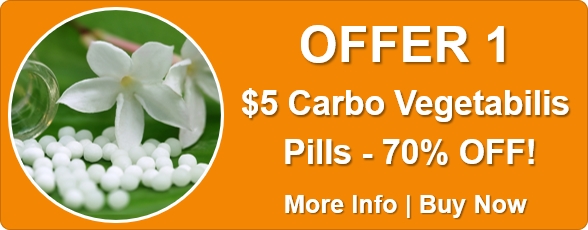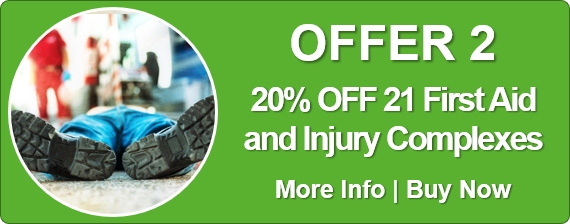The Use of Homeopathic Prophylaxis and Treatment For Malaria in Endemic Areas Of Kenya: Part 2
Abha Light And Malaria Homeoprophylaxis
 (The following paper was presented at the Cuban Nosodes 2008 International Conference by Didi Ananda Ruchira, DIHom, ND, FKIAM, KSoH, of the Abha Light Foundation.)
(The following paper was presented at the Cuban Nosodes 2008 International Conference by Didi Ananda Ruchira, DIHom, ND, FKIAM, KSoH, of the Abha Light Foundation.)
In Kenya, Abha Light Foundation has been working in the fields of malaria and HIV for 10 years, treating with homeopathy and natural medicines. After observing the ill-effects of the current treatment of malaria in dozens of patients, we developed a protocol of homeopathic medicines for all-round prophylaxis and treatment.
There are several problems that must be tackled in this wholistic protocol to malaria treatment. First of all, we must understand how the common person in a developing country deals with malaria. In this report, I am giving my practical observations only.
In Kenya, malaria is common. In the rural areas as well as in the urban slums, many people don’t have nets or use them regularly. So, they are prone to get malaria and they get it frequently. Over time, many people develop a kind of resistance to malaria, so that attacks become somewhat milder over time. But that doesn’t prevent or predict when a virulent form of P. falciparum malaria may attack anyone or if someone’s immune system is low, such as in HIV infected persons, children or malnourished from poverty.
Of course, children are most vulnerable to fatal forms of malaria. If they do survive, often they are damaged with lifelong brain disease, epilepsy, paralysis or mental retardation. The terrible burden of caring for such victims drains the mothers of hope, and drains the already impoverished family of financial resources cursing them with eternal poverty.
Malaria Treatment with Homeopathic Medicine
Before beginning this section of my presentation, I must tell you that in fact, I have done no laboratory research on this approach due to lack of funding. Homeopathy in capitalist countries is meeting great opposition simply because it challenges the pharmaceutical companies dominion over the health care of billions of people.
The research as such it is, is purely on objective, observation of cases presented analyzed homeopathically and cured. In my opinion, it is no less scientific, since the results are repeatable and consistent.
What Happens in Real Life When a Villager is Attacked with Malaria?
What happens is simple. They go to the nearest kiosk that sells sodas, biscuits and over-the- counter drugs and get some malaria medicines. Self-medication is the primary treatment, usually with out-dated therapies. Even up to August 2008, useless chloroquin-based drugs were still being sold in such kiosks. But whether it is the latest drugs or outdated ones, the patient then self-medicates and does or doesn’t get over the bout of malaria. After a week, he or she is back to work, but with lingering malaise and never quite feeling right again. This suppression mixed with side-effects produces a lingering malarial miasm, that over time weakens the immune system and produces chronic diseases in the individual.
Alternatively they may go to a nearby private community nurse or even the government hospital. There, they may or may not be properly diagnosed and, again, given drugs by injection or orally which may or may not work. But one thing is common: they will likely have lingering side- effects with each new bout of malaria and repeated rounds of malarial drugs. Relapses or re-infection is frequent with most of these cases. The conventional drugs never really clear the disease.
The third alternative is for the patient to resort to local traditional herbs. Unfortunately, in Kenya, the traditional healers have a mixed reputation and due to other factors too involved to go into here, there is little consistency in the quality of this herbal approach. It is at this stage that the patients now come in contact with us at Abha Light. What is presented to us, is a patient with a disease picture mixed with latent suppressed malaria, drug- induced side-effects and recurrent attacks.
I felt that to create an effective treatment for malaria that could be given in en masse, we had to look at all three problems and devise a wholistic solution. So let’s look at each of these problems and their solutions separately.
Recurrent or Relapsing Malaria
As written earlier: Relapses occur because P. vivax and P. ovale have dormant liver stage parasites (“hypnozoites”) that may reactivate. The challenge here is to remove the parasite from the spleen and liver in a natural way.
I will also propose that many relapses are in fact the effects of overdosing of quinine and synthetic quinine based drugs. The natural laws of homeopathic simillimum apply with all substances, whether they are intended or not.
Neem
At ALF we have chosen a locally available, but globally known herbal medicine best known as Neem. Azadirachta indica (or Melia azdirachta, Neem) is a native tree of the Indian subcontinent and has 5000 years of recorded herbal medicinal history. There is plenty of modern research done on this plant.
Neem was brought to Africa during colonial times and has readily found a home on African soil. It is found growing plentifully on the hot plains and coastal areas all over Africa. Being plentifully available in Kenya, it’s cheap and accessible to everyone. It is for this reason we choose to use Neem.
(NOTE: see article Hpathy Ezine, November, 2006 on Tara Blasco’s use of Neem in Tanzania. It was I who introduced Tara to the use of Neem)
The following information is from www.neemfoundation.org.
Practitioners of the Indian Ayurvedic medical system have been preparing neem in oral doses for malarial patients for centuries. Neem’s anti-malarial activity was reported in Ayurvedic books as far back as 2000
B.C. (by Charaka) and 1500 B.C. (by Sushruta). Even outside India-in Nigeria and Haiti, for example-neem-leaf teas are used to treat malaria.
In the past, researchers were unable to confirm that neem products can affect the malaria parasite Plasmodium falciparum. And it was not for want of trying. Various groups researching anti-malarials repeatedly tested neem. The results in infected mice, ducks, and chickens were inconsistent and usually negative.
Nonetheless, there is recent evidence that improper extraction methods may explain the earlier failures. Certain extracts of neem leaf and neem seed have now proved effective against the malarial parasite, and the structure of one active component has been determined. This compound, gedunin, is another limonoid. It is said to be as effective as quinine in malaria-infected cell cultures.
Neem leaf extract greatly increases the state of oxidation in red blood cells, which prevents normal development of the malaria virus. Irodin A, an active ingredient in the leaves, is toxic to resistant strains of malarias; 100 percent of the malaria gamete are dead within seventy-two hours with a 1 to 20,000 ratio of active ingredients. Other experiments have used alcoholic extracts of neem leaf, which performed almost as well.
Gedunin and quercetin, compounds found in the leaves, are also effective against malaria. Several studies show that neem extracts are effective even against the more virulent strains of the malaria parasite. Some scientists believe that stimulation of the immune system is a major factor in neem’s effectiveness against malaria. The plant also lowers the fever and increases one’s appetite, enabling a stronger body to fight the parasite and recover more quickly. Even though neem may be effective against the parasites that carry malaria, it has not been shown to prevent the malaria infection once it’s in the body.
At Abha Light we have harvested the neem from trees growing in rural areas in Kenya and produced our own Neem Tonic as a homeopathic 2x (or D2). It has proven its effectiveness in eliminating recurring malarias.
Patients are to take 5 drops a day for 2-3 weeks. We believe this destroys any parasites that may remain in the body and breaks the cycle of recurrent malaria. Neem 2x continues to be given successfully to thousands of Masai tribals in Tanzania. A local physician reported on it in 2006. The report is available through Abha Light’s website.
Side-effects of Drugs
Lingering side effects of quinine and drug poisoning: Returning to our materia medica, we find that the old masters already were aware of the dangers of chloroquin and sulphurated quinine. By 1883, Sulphate of Quinine entered the homeopathic pharmacopoeias. We have found that a simple detoxification from the drugs can be done with 3-5 doses of China Sulph 30.
Let me share with you a case:
I saw Mosei, a teenage boy, with his father in 2006. He came to see me from a village where we had recently conducted a mobile clinic. They arrived to the mobile too late, so they came up to Nairobi for treatment. The boy had an unusual kind of “epilepsy”. It took but a few directed questions to uncover the story, but after that it was clear sailing towards the cure. In 2005, the boy, staying at a boarding school, got malaria. The school nurse gave him some malaria medicine. He felt better and returned to school after a few days. Then without warning, he blacked out, stiffened and fell down (more like catalepsy rather than epilepsy). Limbs stiff, eyes staring. No tremors, no foaming, none of the typical epilepsy symptoms one would expect. There are many details to the fit itself, but in fact, they are unnecessary to this analysis. The second time it happened the school put him in the hospital on a malaria drug drip and called his father. Since then, he goes into a fit without warning, without any aura. The doctors put him on anti-epilepsy drugs. He’s had to drop out of school because his mind has become dull. In fact, his whole future is now threatened because he can’t go to school. There was one unusual feature to his fits. When I asked the father, how often does it occur?, he said “On the 3rd and 17th of every month”. I have never come across such a clear periodicity! His fit happened like clockwork every 14-16 days. In the last two months, the nature of the cataleptic fit had changed: he had started shaking, had become more violent and angry afterwards.
Three doses of China Sulph 30 cured this case. After the initial dose, there were only 2 or 3 relapses. A year later, in 2007, Mosei called to thank me. He was back in school and back at the top of his class.
Malaria Nosode: Prophylaxis Against Future Malaria Attacks
We come to the core of our 3-step program. The client has taken by now 2 weeks of Neem 2x, and concurrently 3-5 days dosing of China Sulph. We consider that the body has been detoxed from the past history of any lingering malaria parasites and from chemical drug poisoning. Now the patient will be given a routine of prophylaxis by taking our Abha Light complex of 30c remedies that contains 5 ingredients, one of them being the Malaria Nosode, sold by Ainsworths Pharmacy, UK, which contains the four malaria Anopheles mosquitoes: P. falciparum, P. vivax, P. ovale and P. malariae. The complex also contains 4 other homeopathic remedies. The ingredients of this complex are Malaria nosode, china officinalis, natrum muriaticum, arsenicum album and eupatorium perfoliatum. We instruct clients to take it for 3 days, 1 dose a day, and after that, 1 dose (1 pill) every two weeks. I have reason to believe that this dosage routine could be extended to once every month, especially after taking a full course of Neem Tonic (2x) of 3-4 weeks.
Our malaria complex was first created to treat malaria and it is very effective in that too. In the case of malaria attacks, it will be effective immediately with patients reporting that they feel well within 24 hours. Our experience has been, however, that patients feel so well they return to their full work routine, only to relapse because they are not fully cured. So we now advise that patients should continue dosing with the malaria complex for a full week even if they are feeling well.
We found, however, that the malaria complex is also very effective in preventing malaria. At our 18 clinics in Kenya, the malaria complex is a regular prescription for hundreds of our patients. In September 2007 we partnered with a local NGO to distribute the malaria complex 3step program to over 1,500 families. Again in Uganda, at the refugee camps, we have provided the malaria complex to about 2000 people with, again, good effect.
Kendu Bay Malaria Prevention Project
Kendu Bay, Kenya, is a fishing village located on the shores of Lake Victoria. That is where we have distributed malaria complex 3-step to 1500 families. Malaria is endemic and most people suffer malaria on a regular basis. Lingering chronic symptoms – either from the recurring state or from drug side-effects include the typical symptoms of simple malaria – frontal headaches, low fevers and general malaise.
Here are a few of the responses from patients who have been taking the malaria complex regularly:
1. Atieno: Two of my children used to get malaria after every other week. I’d get them to a dispensary for injections or I’d buy “Fansidar” pills [supposedly out-dated malaria medicine]. The fever could fade away for a short time then come back. Going to school for my children was a problem since they were always sick and had to stay home. For myself, I used to vomit, get headaches, backache and felt chills in the evenings after every week or two. But after taking the malaria complex, my two children and I feel much better and until now we don’t experience any more malaria.
2. Beatrice: Before the malaria complex, I had headaches, vomiting and fever after every two weeks and would take Metakelfin, but they were not helping much. The pain and fever could disappear for a while, but would recur again. My 6 children were sickly with fever after every month or two weeks. I’d give them paracetamols to relieve them from pain. Since starting the malaria complex we haven’t experienced any sickness in the family.
3. Grace: Before the malaria complex, I’d get sick every month as would my two children. I used to feel weak in the morning, the fever would rise high and I’d vomit. I’d always go to the clinic at that time and would be given injections and malaria tablets to ease the sickness. After taking the malaria complex, I’ve never been back to the clinic, we don’t get sick anymore and are very happy!
4. Margaret: For a long time I couldn’t use my right hand to support a pail of water to my head, my hipbone used to be very painful. But since I started using the little white pills, I don’t suffer that anymore. I’ve not suffered malaria since the malaria complex.
5. Isabella: I had malaria at the time of getting the malaria complex but improved and now I have very good health. One of my children had malaria, the child is now feeling very well. The liquid medicine [Neem Tonic] is still there for the family to use but their general health has improved.
6. Monica: I, together with my children, have faithfully taken the medicine every day as indicated. I used to have headaches from the back of the head and back pain as well. Now, my husband tells everybody that his wife feels very good in the whole body after taking the medicines. I’ve not been to the hospital since I started using these medicines.
7. Adhiambo: Headache was my constant problem. I couldn’t bend or turn in my sleep. I used the the malaria complex 3- step as directed and now I’m feeling better. Now, I can work my farm for many hours. The headache is completely gone.
8. Hellen: My whole household has improved in health after taking the malaria complex 3-step medicine. They haven’t been to the hospital or suffered malaria since starting it.
9. Carolyne A: She used to suffer headache, the children used to suffer constant malaria. The the malaria complex 3-step has brought back life in her house. She believes in using such medication [ie, homeopathic]. She suggested that a clinic with such medicine be brought closer to them.
Sadly, we have lacked the funding to perform proper research and I’m sorry I cannot present firmer results. However we have conducted patient surveys and here are those results:
• 34 clients participated in the survey. Of those, about 30% have been using 3-Step for 3 months or more. 47% use a net regularly. The participants ages ranged from 2 years to 65 years of age -both male and female.
• In the 6 months before starting the program, all 100% of participants had attacks of malaria or malaria-like symptoms at least once. Of the 34 participants 71% used to get malaria or malaria-like symptoms once a month or every two weeks.
• Of these, 47% actually took a test to confirm it.
• 33% self-medicated, 66% took conventional medicine by prescription, 1% treated with herbal or homeopathic medicine.
• Since starting the 3-step programme, only 12% or 4 out of the 34 respondents had an attack of malaria or malaria-like symptoms. We can see even by these simple numbers that there has been a decrease in malaria or malaria-like symptoms.
Regarding “malaria-like symptoms”
In Kenya, people are so used to suffering malaria, that nearly any symptom cluster of headaches, vomiting and fever will be called “malaria” in the local language. Without a test, it is very difficult to determine if it is truly a malaria infection. So the questionnaire included asking about all classic symptoms of malaria. If the patient said they were suffering malaria, but hadn’t taken a test, they were asked if they suffered frontal headaches, fever, chills, bone pains, vomiting and diarrhea. If 3 or more of these symptoms were reported we called it “malaria-like symptoms”.
Further, the question of whether it’s malaria or not, can be questioned from the homeopathic viewpoint. Drug side-effects and suppressed malaria would give similar malaria-like symptoms, without the patient testing positive for malaria. Very tricky indeed! This admittedly needs further research.
Conclusion
Homeopathy does indeed work for malaria. Homeopaths should not be afraid of this disease, nor prevented from treating it.
Editor’s note: Abha Light Foundation is a worthy cause helping many people with few resources. If you would like to help, you can make a donation by visiting their website.

Didi Ananda Ruchira, DIHom, ND, FKIAM, KSoH – an American, has been a homeopath since 1998. She’s been living in Kenya for twelve years. She is the director of Abha Light Foundation. She also holds position on the executive board of the Kenyan National Traditional Health Practitioners Association. Director Cells: 0733-895466 / 0723-869133 Skype: anandarucira







